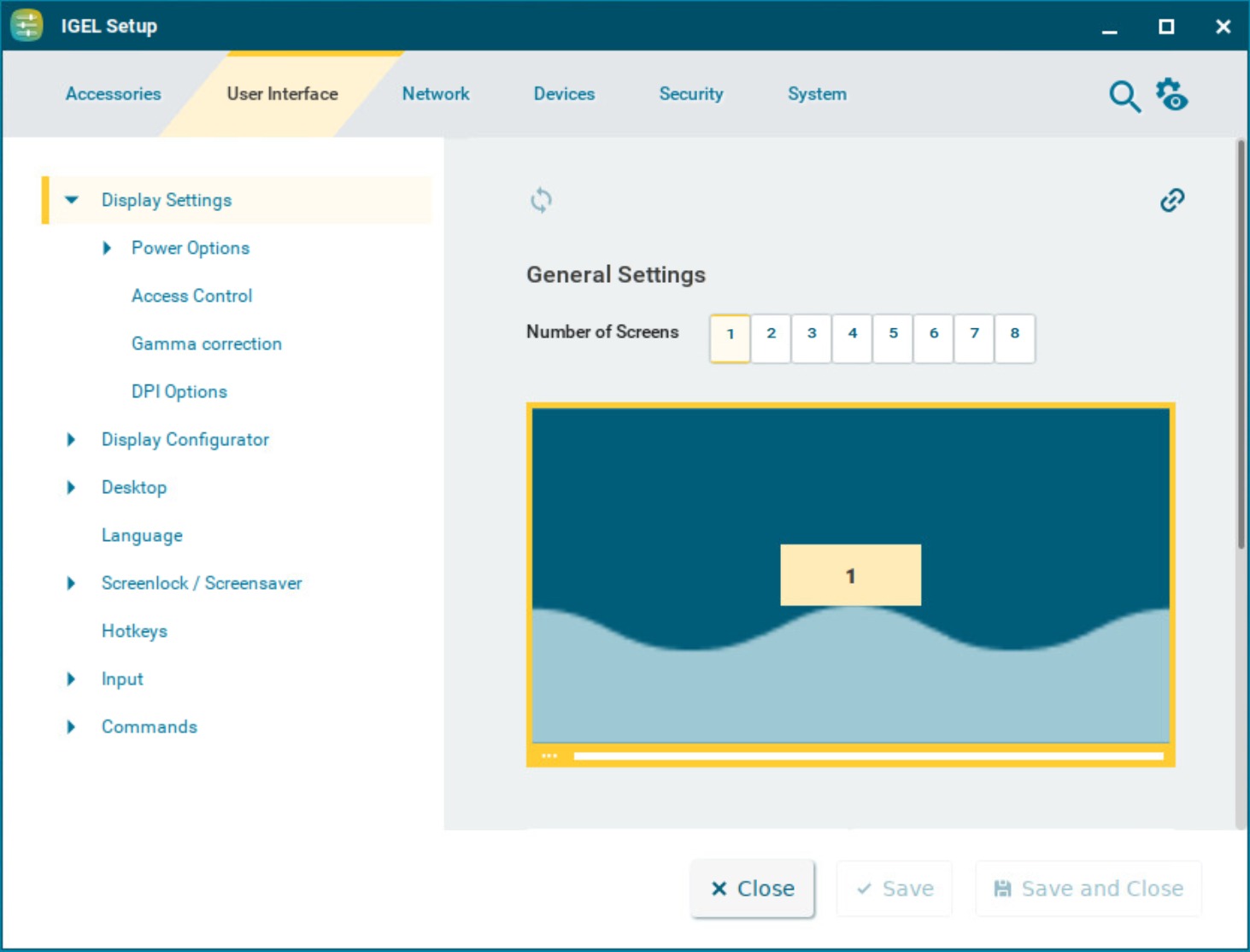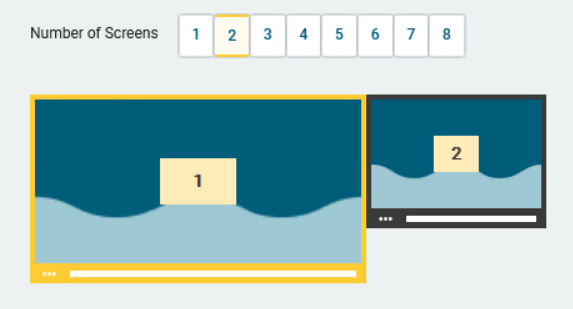Display Settings in IGEL OS 12
This article shows how to configure the display settings for the monitors in IGEL OS.
Take notice that a successful and correct display configuration depends, however, on many factors. For example, cables, current driver, BIOS settings, etc. can influence your screen configuration and, thus, have to be considered when setting up the monitor environment.
You can also use the display tray app for display configurations. For more information, see Tray Applications in IGEL OS 12 .
Menu path: User Interface > Display Settings

Always try the configuration locally before applying it to multiple devices via a profile: A faulty display configuration can cause your GUI to become unstable and lead to a black screen.
If you face a black screen problem because of the wrong display configuration, try one of the following recovery options:
In the UMS: Edit the display configuration via Devices > [device name] > [device's context menu] > Edit Configuration or via a new profile.
In Web UMS: Edit the settings by clicking Edit Configuration in the Device Information of the device under Devices > [device name].
On the endpoint device: Restart the device and select Emergency boot (setup only) during the boot procedure. In the Setup, you can then change the display configuration.
General Settings
Number of screens
The number of monitors used can be selected by clicking the numbered buttons.
In a multimonitor configuration, every screen connected to the endpoint device can be configured independently after selecting the screen. The selected screen is highlighted with a yellow frame. The white bar at the bottom edge of the screen represents the physical orientation of the monitor. The position of the screens can be configured by drag&drop.

Screen resolution
The resolution can be selected from a drop-down menu. (Default: Autodetect)
You have the option of defining your own resolutions via the registry key x.xserver0.custom_resolution. In order for the values set there to take effect, the resolution must be set to Autodetect. The following parameters apply to the entry in the registry:
WxH: W = width, H = height (example: 1920x1080)WxH@R: W = width, H = height, R = refresh rate (example: 1920x1080@60 or 1920x1200@59.8)
Be careful when changing resolutions manually. Excessively high resolutions can cause a black screen.
For details of the display resolution supported by your IGEL device, please see the datasheet archive for legacy IGEL devices.
For detailed instructions on MST configuration for UD3 and UD7, see:
Screen rotation
The rotation can be selected from a drop-down menu. (Default: None)
Advanced Settings for the Screen
Detect refresh rate automatically
☑ A refresh rate for the monitor is identified automatically. (Default)
☐ A refresh rate for the monitor is to be set manually.
Refresh rate
Number of individual images per second
Possible values:
30 ... 100 (Default: 60)
Be careful when changing the refresh rate manually since a faulty configuration can cause a black screen.
Graphic card
Graphic card assigned to the selected screen. A graphic card can have more outputs than are actually used. In order to ensure transparency, you may need to assign the graphic cards manually.
If Automatic is set for the Monitor and no configurable monitor is found for the selected graphic card, the next available monitor will be used by another graphic card.
Monitor
Connection type. (Default: Automatic)
